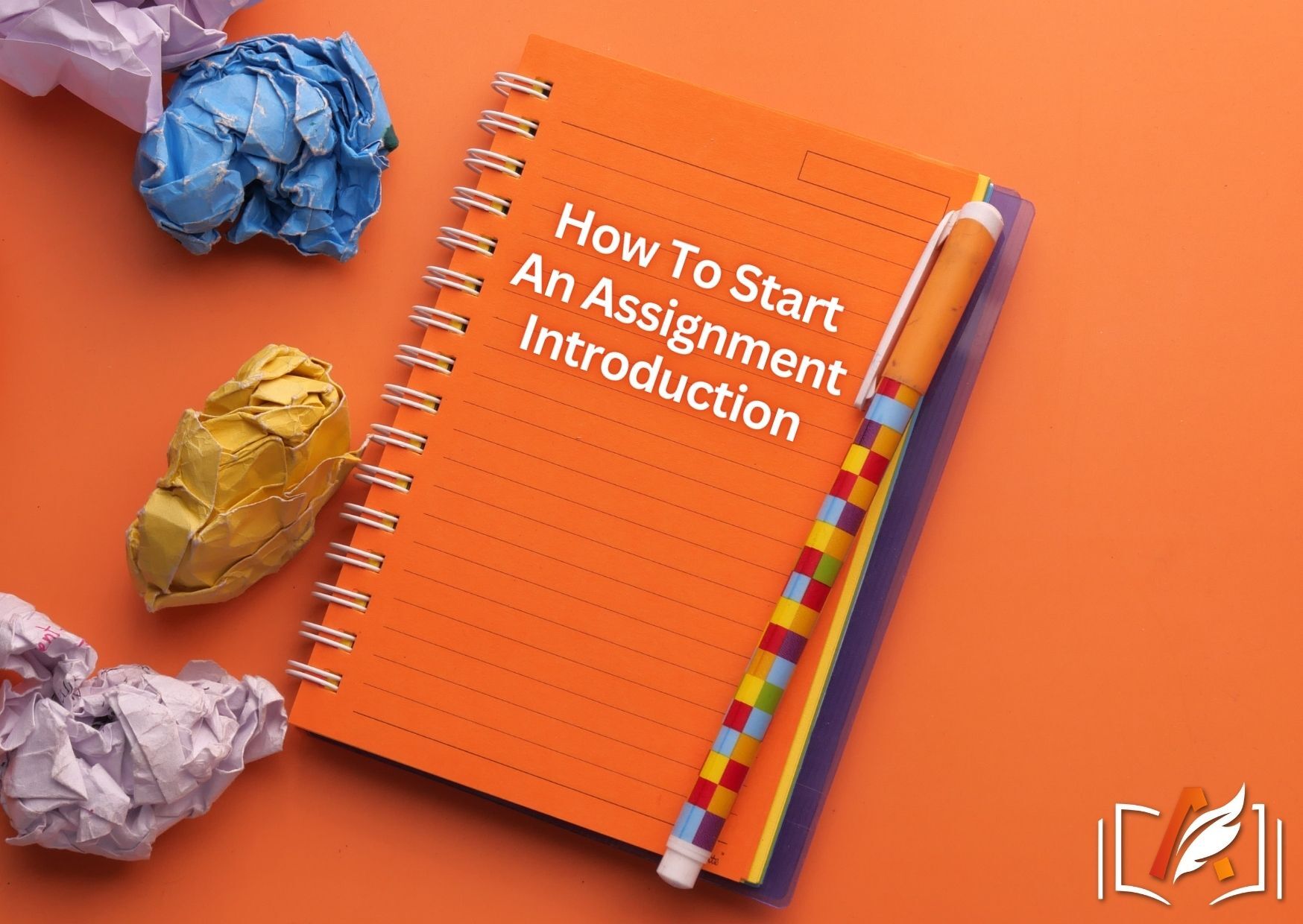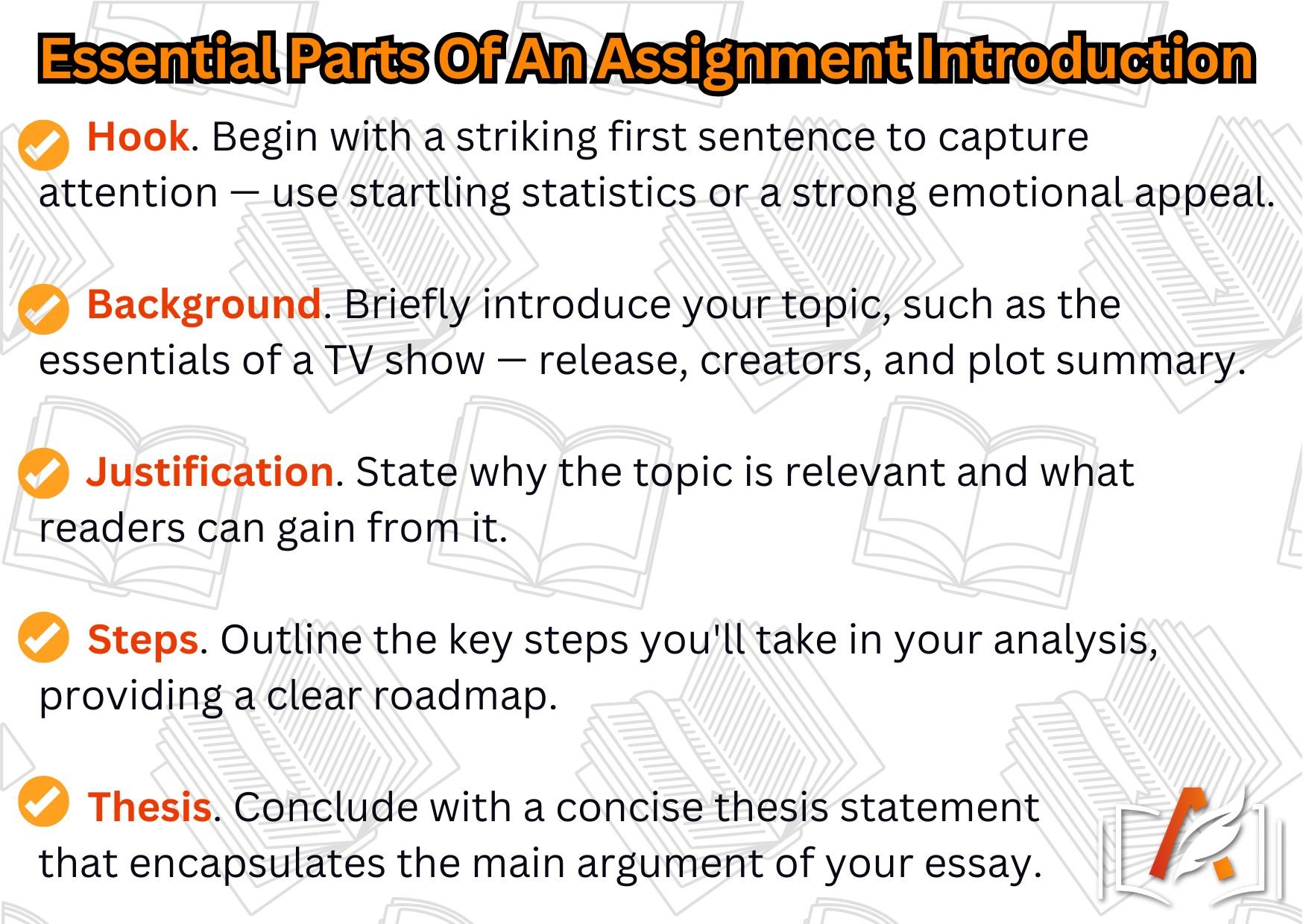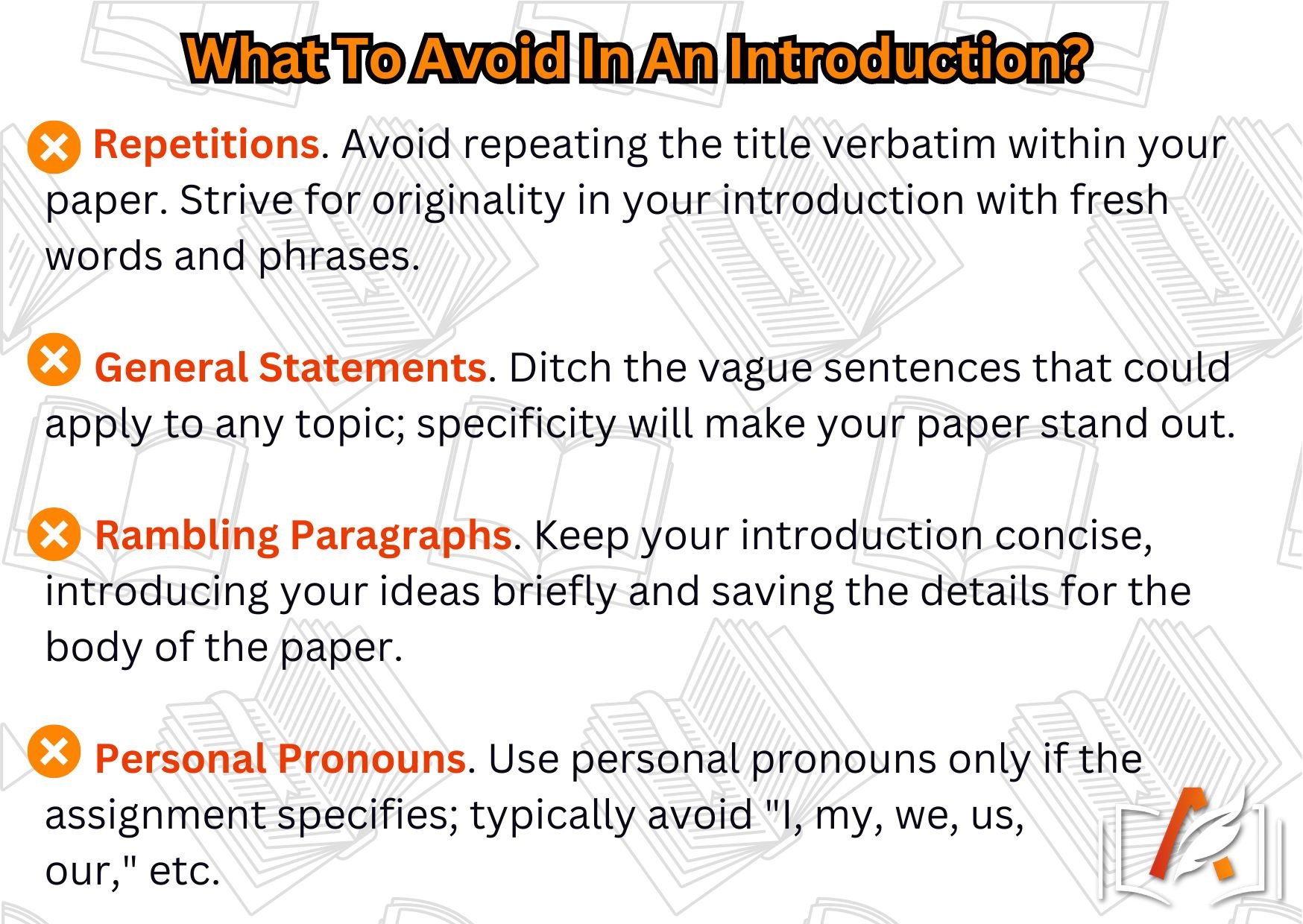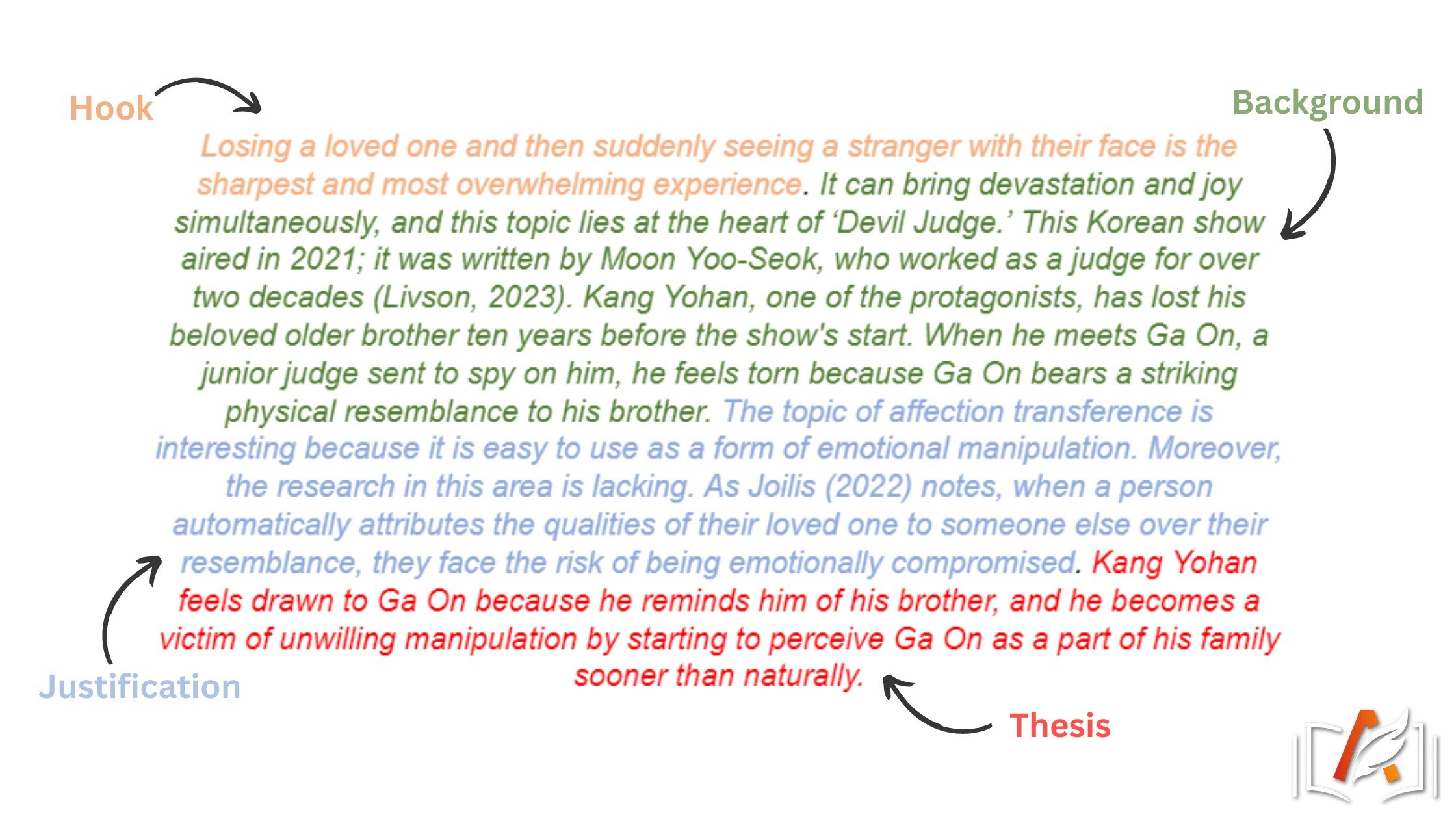 Ruby Butz
Ruby Butz

Every student wonders how to start an assignment introduction because this knowledge can keep them afloat through their endless years of school, college, and university. If you're here, you probably wonder that as well. Thankfully, there is nothing complicated about writing an introduction. This is how one starts an essay that teases the topics to come and explains your work’s final goal. Its importance is absolute.
Think about it. You open someone’s essay and see a very boring assignment introduction. Chances are, it’ll inform your opinion about the whole text right then and there, and even if the body has some fascinating facts, you might stay unimpressed anyway. First impressions usually stick with people. The guide prepared by StateOfWriting’s experts will teach you how you can grab your audience’s attention from the first seconds. In it, you’ll find explanations, examples, tips, and even common grading criteria that will help you start most compellingly.
How to Start an Assignment Introduction and What to Include
The introduction plays the same role in every paper, regardless of its topic. It must briefly address the content you will explore in the body and outline the needed steps. Its more subtle purpose is triggering genuine interest in your audience, motivating them to keep reading.
5 Elements of Every Introduction
Include these components in the introduction for assignment you’re working on:
- Hook. This would be the first sentence of your introduction. Does the word itself evoke any associations in you? When you hook someone, be it a fish or a person, you get to hold onto them. They become yours, and that’s exactly what you should strive for when writing your paper. Hit your readers with the very first line as powerfully as you can. It could be a piece of astonishing statistics that will make people gape in shock. Alternatively, you could go for an emotional approach, writing something that clenches your readers’ hearts in their chests. Whatever you choose, make it count.
- Background. The second element you’ll need for learning to know how to write introduction for assignment is the background. Professional tips for college application essay will show you how essential it is to make it interesting. This background represents your topic — it must explain what you’re investigating and how this subject came to be. For example, we’re analysing a TV show, Devil Judge. To present its background properly, we’d mention its title, airing date, and key figures. Then we’d briefly describe its plot.
- Justification. Next in figuring out how to write an introduction for assignment is deciding why you picked your topic. What makes it relevant to your subject? How can people benefit from reading about it? No need for much detail; just make a few references.
- Steps. This and the next component are interchangeable. In most cases, students need either one or another, depending on your professor's request. Outline the steps you’ll be undertaking when exploring your topic. If you will analyse the plot in the first body paragraph and dissect the characters in the second one, explain it to your readers. Provide a roadmap of your intentions. This approach is more suitable for really long papers.
- Thesis. How to write a good introduction for an assignment? By creating a powerful thesis. Most academic papers require it. It concludes your introduction, functioning as its last sentence. A thesis is a direct claim that embodies your essay’s entire essence. Even if people read it and nothing else, they should understand your work.

Specific Moments to Cover in Your Intro
You have a general picture of how to start writing an assignment now. It’s time to learn about the smaller and more specific details you should include in your introduction!
- Context. Always give your readers context. Disclose it carefully, bit by bit, instead of jumping straight to your main point. Using our TV show example, saying “Devil Judge is about revenge and power abuse” would be a bad start. It dumps too much information on a person and discloses too many relevant points. Be gradual and untangle your topic.
- Overview. When writing an introduction for an assignment, include a content overview. As mentioned above, it could be present as steps or a thesis. Either way, just demonstrate your plans to your readers — no introduction can function without it.
- Your perspective. Share your opinion about your topic. It doesn’t mean that you should use personal pronouns, just show what your position is by focusing your readers’ attention on a specific angle. Going back to our example, we could mention how the affection of Judge Kang toward his deceased brother coloured his perception of Ga On, who closely resembled him physically. This would narrow the focus down, displaying what we want to explore.
- Your goal. This aspect is closely linked to the previous one. Specify the end point of your essay by teasing the conclusion you plan to achieve.
Avoid These Mistakes When Writing Your Introduction
- Repetitions. Some students choose to repeat their title word by word in their paper. It’s not a good idea! Your assignment introduction sentence starters should be more unique. Come up with new words and phrases instead of engaging in self-plagiarism.
- General statements. Avoid vague sentences that suit any topic. An individual and relevant introduction will help make your paper look special. Be specific.
- Rambling paragraphs. Don’t try to introduce all possible information in your first paragraph. Being specific doesn’t mean talking non-stop. You should briefly present your ideas in the introduction and develop them in the body.
- Personal pronouns. Never use personal pronouns unless your task allows them. This covers “I, my, we, us, our,” etc.

5 Tips from Our Academic Experts
StateOfWriting’s British experts have written more essays than they can ever count. This extensive experience fuels their professionalism: they know how to create amazing papers, and they shared some key introduction-related insights with you.
- Create an introduction last. How to start an assignment for university? By writing it last. Yes, it may sound surprising, but this is how you can ensure you don’t need to rewrite anything later. An introduction has to reflect your whole paper. You should understand your findings and conclusions before crafting it.
- Size matters. Introduction shouldn’t take more than 10% of your total word count.
- Keep a balance between teasing and informing. Remember our assignment introduction writing tips from above? It’s important to share just the right details with readers.
- Edit this intro. Re-read your introduction a couple of times. Clean it thoroughly, removing all accidental mistakes and typos.
- Seek help. If any of these rules frustrate you, simply buy assignment online from professionals. Our writers could give you extra tips or take over the task completely.
Grading Criteria to Guide You on How to Write an Assignment Introduction
StateOfWriting’s experience spans across various fields. We know how college professors operate and what they expect to see in students’ papers. Take a look at their common grading points below. Remember them when you work on your introduction and adjust it accordingly.
- Conciseness. Professors want a short yet succinct introduction that covers all the necessary points without being overly long or overwhelming.
- Relevance. An introduction must be relevant to the subject and prompt. If the connection is loose, some points may be removed.
- Suspense. Not all professors pay attention to this aspect, but you’ll benefit from intriguing your audience and instilling a sense of anticipation in them.
- Research. Most essays require the use of credible academic studies. Cite at least the most important one in your intro to demonstrate your thoughtful approach. Get help with assignments if you’re struggling with this part.
- Thesis. All professors award separate points for a strong thesis statement.
Lack of inspiration? Want to Enjoy Free Time?
GRAB A 20% DISCOUNT
Contact StateOfWritingPractical Example of Effective Essay Introduction
We will provide you with a practical assignment introduction example to secure your theoretical knowledge. One of our top writers created it on the topic we already mentioned, the Devil Judge show. Find its analysis below and use this text as a template for your introduction!
The Dangers of Affection Transference in ‘Devil Judge’
Losing a loved one and then suddenly seeing a stranger with their face is the sharpest and most overwhelming experience. It can bring devastation and joy simultaneously, and this topic lies at the heart of ‘Devil Judge.’ This Korean show aired in 2021; it was written by Moon Yoo-Seok, who worked as a judge for over two decades (Livson, 2023). Kang Yohan, one of the protagonists, has lost his beloved older brother ten years before the show's start. When he meets Ga On, a junior judge sent to spy on him, he feels torn because Ga On bears a striking physical resemblance to his brother. The topic of affection transference is interesting because it is easy to use as a form of emotional manipulation. Moreover, the research in this area is lacking. As Joilis (2022) notes, when a person automatically attributes the qualities of their loved one to someone else over their resemblance, they face the risk of being emotionally compromised. Kang Yohan feels drawn to Ga On because he reminds him of his brother, and he becomes a victim of unwilling manipulation by starting to perceive Ga On as a part of his family sooner than naturally.
Analysis of Successful Assignment Introduction
Hook: The essay begins by thrusting the readers into a complicated emotional scenario and shortly describing the feelings it evokes.
Background: In the next several sentences, we explore the meaning of ‘Devil Judge’, address its main characters, and show our willingness to focus on one specific theme, affection transference.
Justification: The paper underlines how transference can be emotionally harmful to people and notes how scarce research is in this area, elevating our study's value.
Thesis: We make a final claim that unites the show's plot with our chosen psychological phenomenon and introduces the points we’ll tackle, such as the resemblance between Ga On and Yohan’s brother, accidental manipulation, and the strengths of their feelings.

FAQ on How to Write an Introduction for an Assignment
1. How many words should my introduction have?
The average introduction should be between 7% and 10% of your final word count. So, if your essay has 600 words, dedicate 60 of them to your first section.
2. What sentence should I start my introduction with?
It could be a shocking statement, statistics, a quote, and even a question.
3. What should I do when writing an introduction for a report?
Stay precise and objective. In this task, you don’t need to develop an individual position on a specific topic, just summarise it properly.
4. How to write an introduction for a case study?
Address the details from this case study. Depending on your prompt, mention the situation and offer ways of analysing or resolving it.
5. What should I do when writing an introduction for a dissertation?
This introduction will be longer. Follow our tips above, but be more detailed. Demonstrate your plan of action and research questions.
6. How to write an introduction for a maths assignment?
The rules don’t change based on assignments. Be formal and thoughtful, and introduce your topic properly by mentioning some of its background.

Meet Ruby Butz, the accomplished author at the StateOfWriting educational blog. With a Master’s in English Literature, notable articles, and extensive teaching experience, she has helped thousands of students develop strong writing skills.
Writers are verified and tested to comply with quality standards.
Work is completed in time and delivered before deadline.
Wide range of subjects and topics of any difficulty covered.
Client id #: 000412
Paper type: Research paperI just wanted to say thank you for the collaboration. You saved me from having to retake modules. The semester is finally coming to an end - just one more month to go, then it’s time to rest. See you next academic year
Client id #: 000411
Paper type: Thesis paperprofessional service on all fronts. my 10-day order was completed in just 6 days, giving me extra time to prepare for submission. very satisfied
Client id #: 000410
Paper type: CourseworkAll was completed just as I wanted. Excellent support - Big thanks to all of you 🙏🤗